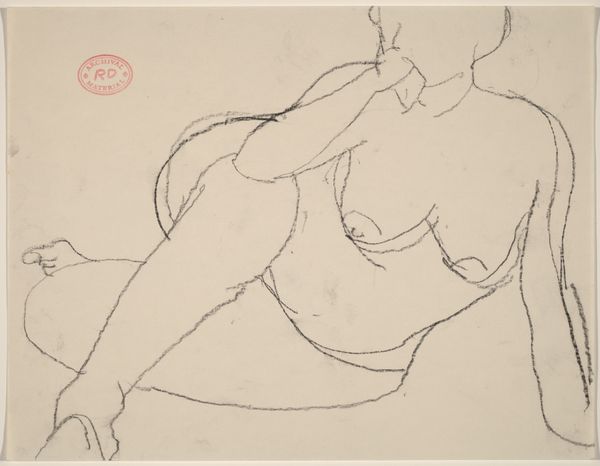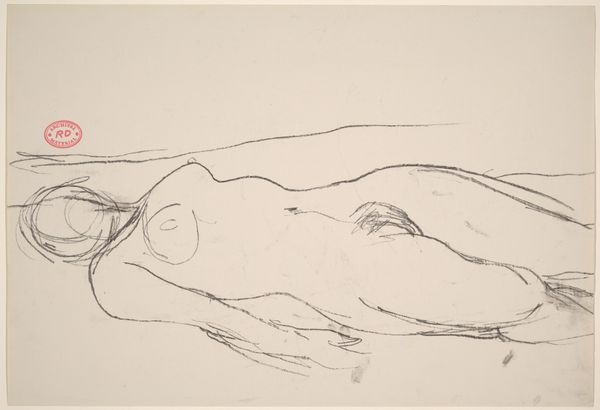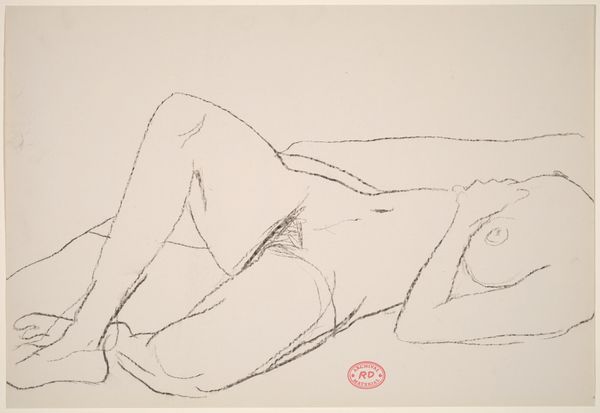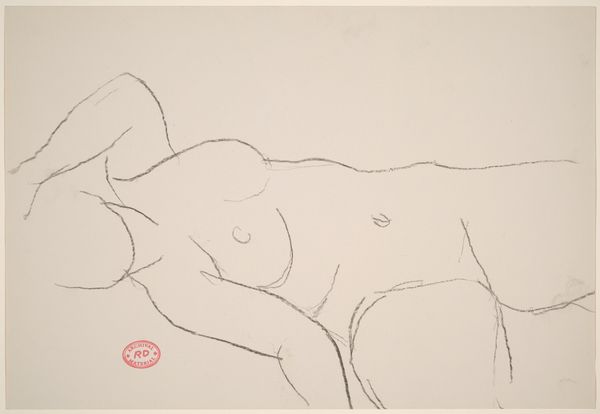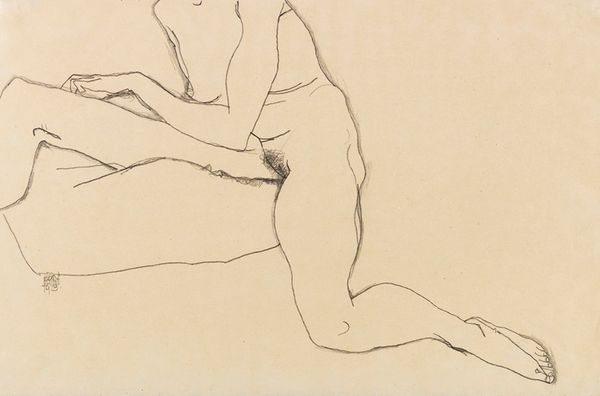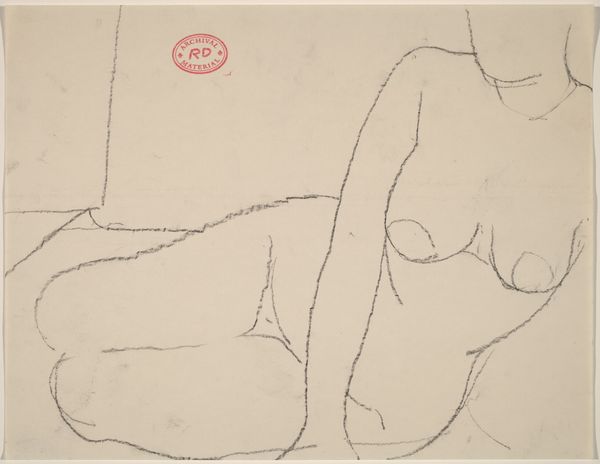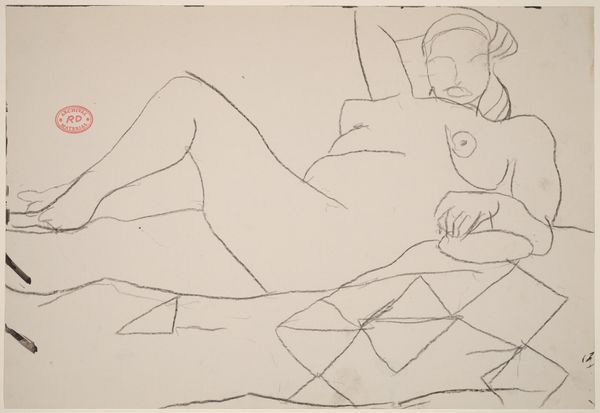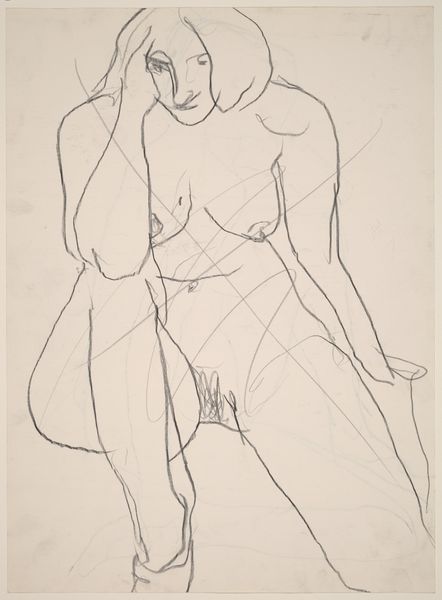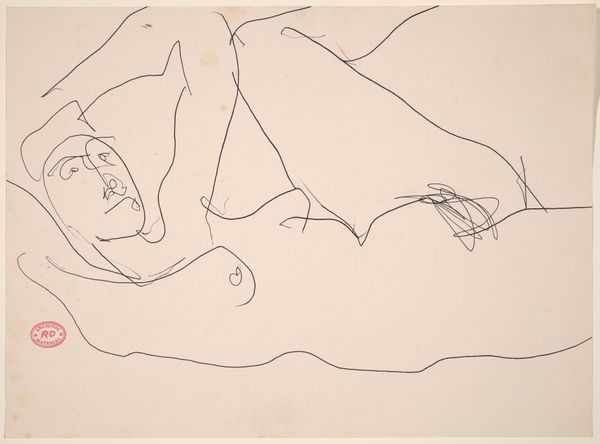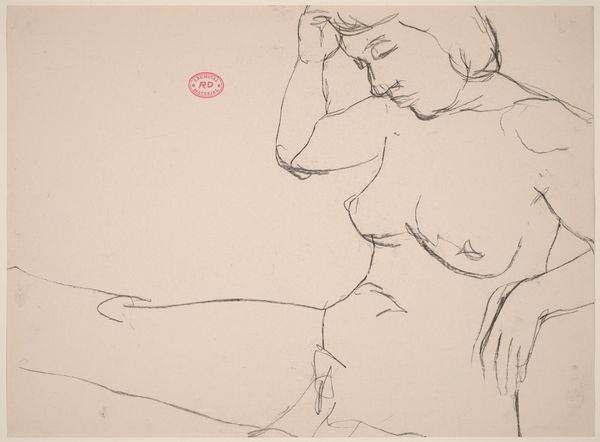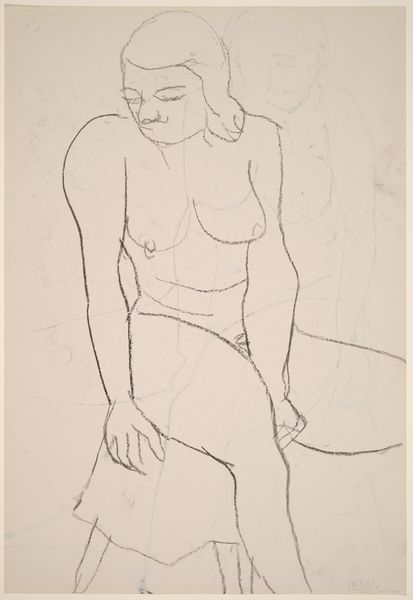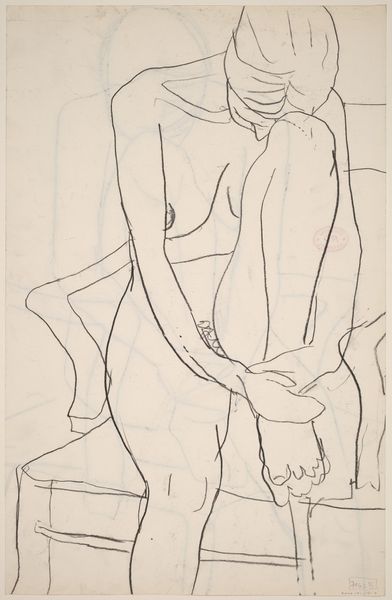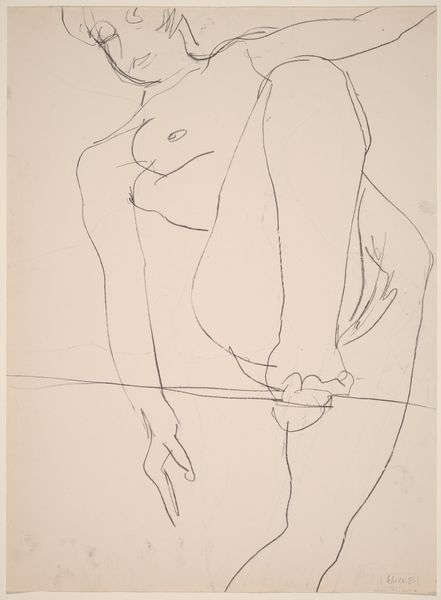![Untitled [female nude stretching while seated] [recto] by Richard Diebenkorn](/_next/image?url=https%3A%2F%2Fd2w8kbdekdi1gv.cloudfront.net%2FeyJidWNrZXQiOiAiYXJ0ZXJhLWltYWdlcy1idWNrZXQiLCAia2V5IjogImFydHdvcmtzL2MyOTcwODEzLTE1N2YtNGU1Yi1iMTg0LTNmNDU4YTFiYWUxMi9jMjk3MDgxMy0xNTdmLTRlNWItYjE4NC0zZjQ1OGExYmFlMTJfZnVsbC5qcGciLCAiZWRpdHMiOiB7InJlc2l6ZSI6IHsid2lkdGgiOiAxOTIwLCAiaGVpZ2h0IjogMTkyMCwgImZpdCI6ICJpbnNpZGUifX19&w=3840&q=75)
Untitled [female nude stretching while seated] [recto] 1955 - 1967
0:00
0:00
drawing, pencil
#
drawing
#
figuration
#
bay-area-figurative-movement
#
pencil drawing
#
pencil
#
abstraction
#
portrait drawing
#
nude
Dimensions: sheet: 43.2 x 31.8 cm (17 x 12 1/2 in.)
Copyright: National Gallery of Art: CC0 1.0
Editor: Here we have Richard Diebenkorn's "Untitled [female nude stretching while seated]," a pencil drawing made sometime between 1955 and 1967. I’m struck by its vulnerability; the figure’s pose seems both open and guarded. How do you interpret this work? Curator: What I see is a negotiation of power, a dialogue between artist and subject embedded in the very act of representation. Considering the period, we have to acknowledge the male gaze that historically dominated portrayals of the female nude. But does Diebenkorn subvert or perpetuate that gaze? Look at the figure’s downcast eyes and self-enfolding posture. Is it modesty, or a critique of objectification? Editor: I see your point about the male gaze. Do you think the abstraction, the almost fragmented quality of the lines, serves to deconstruct the traditional idealized female form? Curator: Precisely. By not adhering to a classical, hyper-realistic depiction, Diebenkorn potentially challenges the viewer’s expectations. Is he trying to reclaim female agency, or is it simply a formal exploration of the human figure? Consider the role of drawing itself – the sketch-like quality – what statement is the artist making about the finished and unfinished? Editor: That’s fascinating. I hadn't thought about the incompleteness adding to the sense of the figure having autonomy; as if she exists beyond the confines of the finished artwork. Curator: Indeed. Perhaps Diebenkorn invites us to question not just the representation of the female form, but also the power dynamics inherent in the artist-model relationship itself. The lack of detail allows for speculation; whose story is this? And how complicit are we in its telling? Editor: Thank you, this has definitely broadened my perspective. I see the drawing now as much more than just a study of form. Curator: Art becomes most interesting when we see beyond the surface, and consider the intricate web of social and historical forces at play.
Comments
No comments
Be the first to comment and join the conversation on the ultimate creative platform.
